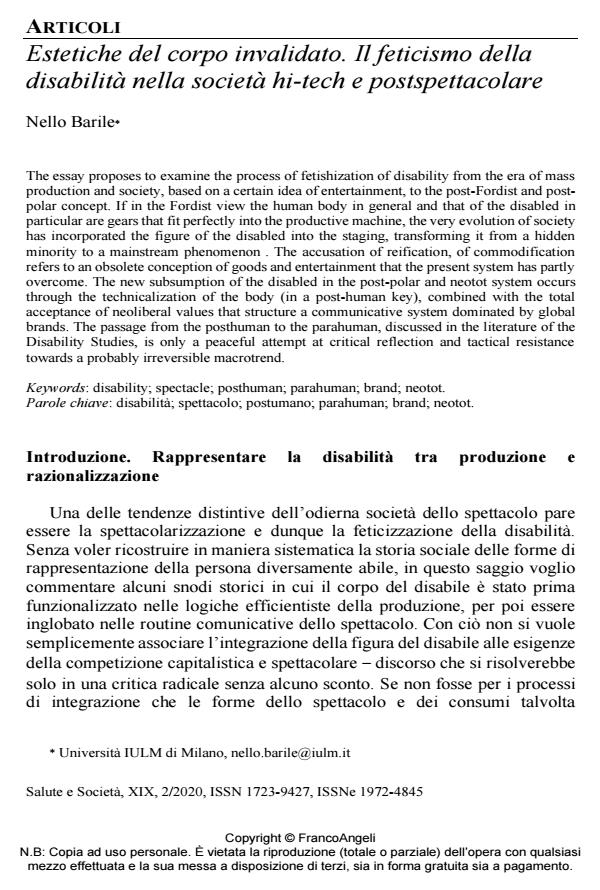Estetiche del corpo invalidato. Il feticismo della disabilità nella società hi-tech e postspettacolare
Journal title SALUTE E SOCIETÀ
Author/s Nello Barile
Publishing Year 2020 Issue 2020/2
Language Italian Pages 19 P. 11-29 File size 394 KB
DOI 10.3280/SES2020-002002
DOI is like a bar code for intellectual property: to have more infomation
click here
Below, you can see the article first page
If you want to buy this article in PDF format, you can do it, following the instructions to buy download credits

FrancoAngeli is member of Publishers International Linking Association, Inc (PILA), a not-for-profit association which run the CrossRef service enabling links to and from online scholarly content.
The essay proposes to examine the process of fetishization of disability from the era of massproduction and society, based on a certain idea of entertainment, to the post-Fordist and postpolarconcept. If in the Fordist view the human body in general and that of the disabled inparticular are gears that fit perfectly into the productive machine, the very evolution of societyhas incorporated the figure of the disabled into the staging, transforming it from a hiddenminority to a mainstream phenomenon . The accusation of reification, of commodificationrefers to an obsolete conception of goods and entertainment that the present system has partlyovercome. The new subsumption of the disabled in the post-polar and neotot system occursthrough the technicalization of the body (in a post-human key), combined with the totalacceptance of neoliberal values that structure a communicative system dominated by globalbrands. The passage from the posthuman to the parahuman, discussed in the literature of theDisability Studies, is only a peaceful attempt at critical reflection and tactical resistancetowards a probably irreversible macrotrend.
Keywords: Disability; spectacle; posthuman; parahuman; brand; neotot.
Nello Barile, Estetiche del corpo invalidato. Il feticismo della disabilità nella società hi-tech e postspettacolare in "SALUTE E SOCIETÀ" 2/2020, pp 11-29, DOI: 10.3280/SES2020-002002